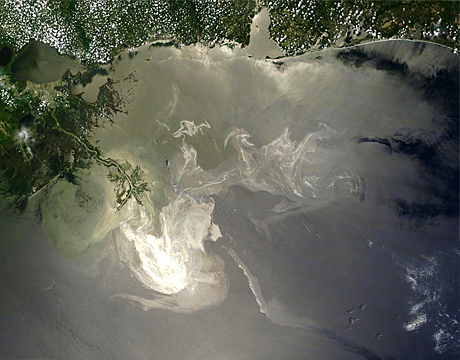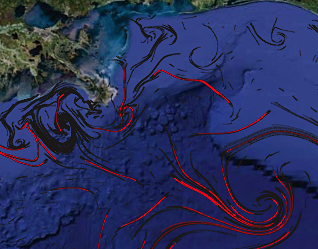Hidden skeleton of the ocean
Undergraduate Project 2023-24 (4H)

The trajectories of fluid particles are sensitive to their initial positions,
which makes analysis based on single trajectories unreliable. For example, it is very hard to predict where a small dust goes once it is released in a fluid flow. Nevertheless,
there are patterns behind the trajectories that can be observed when some dye is released in the flow. These patterns, which can be interpreted as hidden skeletons of fluid flows, are identified as the most attracting or repelling surfaces (manifolds) in the flow. Some recent ideas that incorporate dynamical systems with fluid dynamics define robust material surfaces, namely Lagrangian Coherent Structures (LCSs), shaping these patterns [1].
In this project, we investigate the fluid whose dynamics form the future of our planet and human race: the ocean. The LCS framework detects and even predicts key features of material transport in ocean currents. For instance, LCSs have been employed to predict the spread of oil in the Gulf of Mexico in 2010 [2]. In this project, after learning the mathematical foundation behind LCSs, the students will calculate them in ocean data to find where in these flows particles are attracted to or repelled from. Studying these structures can bring more insight to our understanding of climate and ocean dynamics.
In this project, we investigate the fluid whose dynamics form the future of our planet and human race: the ocean. The LCS framework detects and even predicts key features of material transport in ocean currents. For instance, LCSs have been employed to predict the spread of oil in the Gulf of Mexico in 2010 [2]. In this project, after learning the mathematical foundation behind LCSs, the students will calculate them in ocean data to find where in these flows particles are attracted to or repelled from. Studying these structures can bring more insight to our understanding of climate and ocean dynamics.

Most computational approaches to find LCS require seeding a large number of particles in flow and tracking them in time. This has drawbacks that include large memory demands, particle clustering and the complications of parallelisation and dealing with boundaries. In the second phase of this project, we try to borrow some ideas from the newly developed method of calculating Lagrangian means [3] to compute LCSs without tracking particles.
This project is well suited to students with strong programming skills, passion for fluid dynamics and interest in climate sciences.